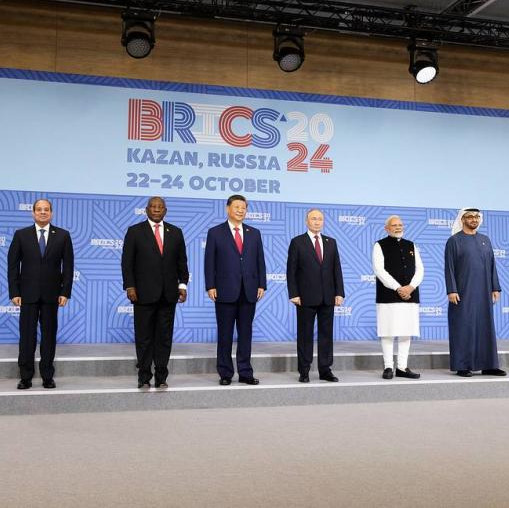In April, there have been developments that have created actual security threat on our continent - under the guise of exercises, strategic task force has been virtually deployed, which can be considered as training a large-scale war scenario in Europe.
From 4 to 8 April 2011, in the Baltic States under the leadership of the U.S. European Command and Strike Force NATO, the Baltic Host 2011 command and staff exercise was held. According to the Estonian National Military Representative at SHAPE, Colonel Ants Kiviselg, the doctrine was positioned as a virtual event for the input and deployment of NATO military forces of many thousands in the Baltic countries, based on computer simulation. An alleged legend was a fictitious situation in a fictitious country, but what kind of state it was – one can easily guess.
It is noteworthy that along with defense forces, departments of highways and railways, health, seaports and airports, etc. were required to the exercise. That is, the whole transport and life-supporting infrastructure of the Baltic States near the border with the Russian Federation has been employed in the exercise. It is easy to guess where NATO forces are going to move on the Baltic roads.
At the same time, with the events being almost synchronistic with one hour difference, two more events of NATO forces operations and training were held from 4 to 15 April in the UK, Sweden, and in the water area adjacent to the Baltic Sea:
- the Joint Warrior 2011 NATO air-naval exercise with the purpose of training for the use of the main attack air-sea forces during the settlement of a regional conflict (40 aircraft, 40 warships, more than 6,000 servicemen participated);
- the Viking 2011 NATO exercise for the application of NATO forces in an international peacekeeping operation (2,000 servicemen participated).
No prizes for guessing that the above mentioned exercises are linked not only temporally but also by a common plan to create in the heart of Europe under a legend of exercises, operations and training activities of strategic Strike Force NATO on the borders of the Russian Federation. Virtual selection of participation in the Baltic Host 2011 exercise of Strike Force NATO furnishes convincing proof of the Alliance Command Staff’s defense planning against Russia far from being of defensive character.
As it became known, NATO (the U.S.) will conduct annually a similar series of exercises in the Baltic Sea region. By experts’ assumption, during this exercise the NATO military forces will be constantly increased and accompanied by a large-scale information-psychological operation with increasing ‘a threat from the East’.
Experts also pass an opinion that the recent NATO exercise in April may be the forerunner of real hostilities on the European continent. An argument for such developments is the NATO military action against the sovereign state of Libya, which, as President Vladimir Putin said, shows that “NATO’s actions in Libya have shown how easily the NATO countries make decisions on aggression against other states.”
The exceptional closeness of April events in NATO, a total absence of information or any comment by the alliance’s official establishment on this issue, both in publication media and the Internet makes itself conspicuous.
The events occurred in April in NATO oblige us to think over their consequences and understand what kind of world we live in and who is around us. The Russian Federation’s doctrinal foundations will help to understand the meaning of the developments and their consequences, identifying the main external threats from the U.S. and its allies:
- “a desire to endow NATO’s force potential with global responsibilities, to bring the infrastructure of NATO member states nearer the borders of the Russian Federation”;
- “deployment (build-up) of military contingents of foreign states (groups of states) in the territories bordering on Russia and its allied countries, as well as in adjacent waters”;
Military-political leadership of the Russian Federation is monitoring the situation and has repeatedly offered the NATO and European states to limit military activities on the border of the alliance with Russia and Byelorussia, as well as to create a new security system in Europe. At the summit of the BRICS countries leaders in April, Russian President Dmitry Medvedev pointed up the position on mandatory conflict resolution through diplomatic means only, and heads of state - the summit participants agreed with him.
However, Europe still has not listened to Russia’s proposals; all of its calls go unanswered. Moreover, the unleashed information war at first, and then a military action against Libya, during which all the provisions of UN Security Council Resolution 1973 on the protection of civilian infrastructure and civilian population were cynically violated, go to show that even today NATO denies all international rules in promoting the interests of the West and overthrowing undesirable governing regimes. The North Atlantic Alliance easily makes decisions on aggression against other sovereign states, both in reality and virtually in its plans.
The war in Libya, NATO’s “Baltic Host 2011” military exercise with renewed force put a question of the need to create a new European security system based on the principles of equal security for all European countries. And the first step to be taken in this regard is the exclusion of the military planning in NATO with a view to war with Russia that the alliance is supposedly considering no longer an enemy.









